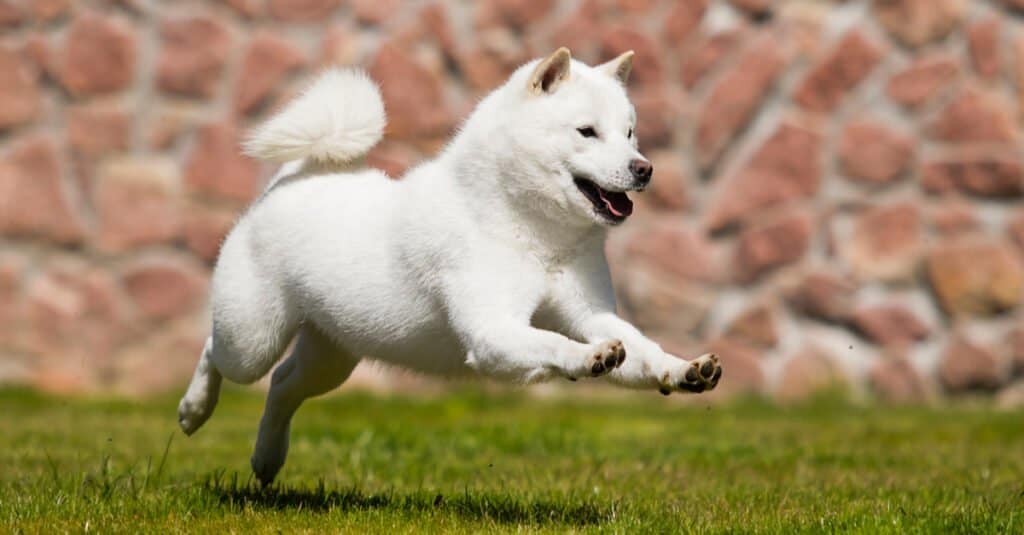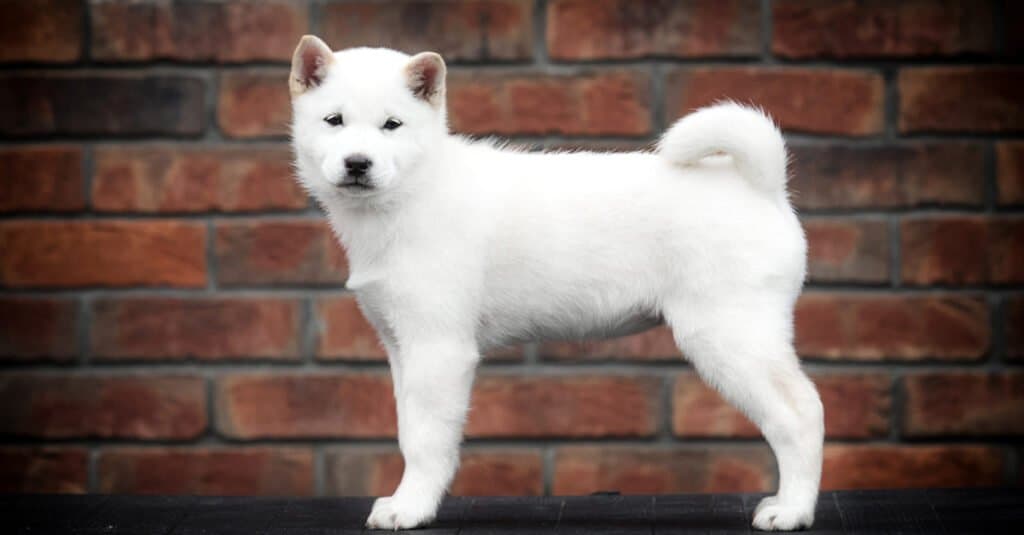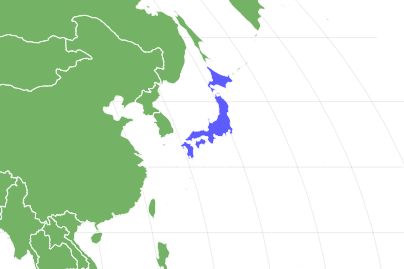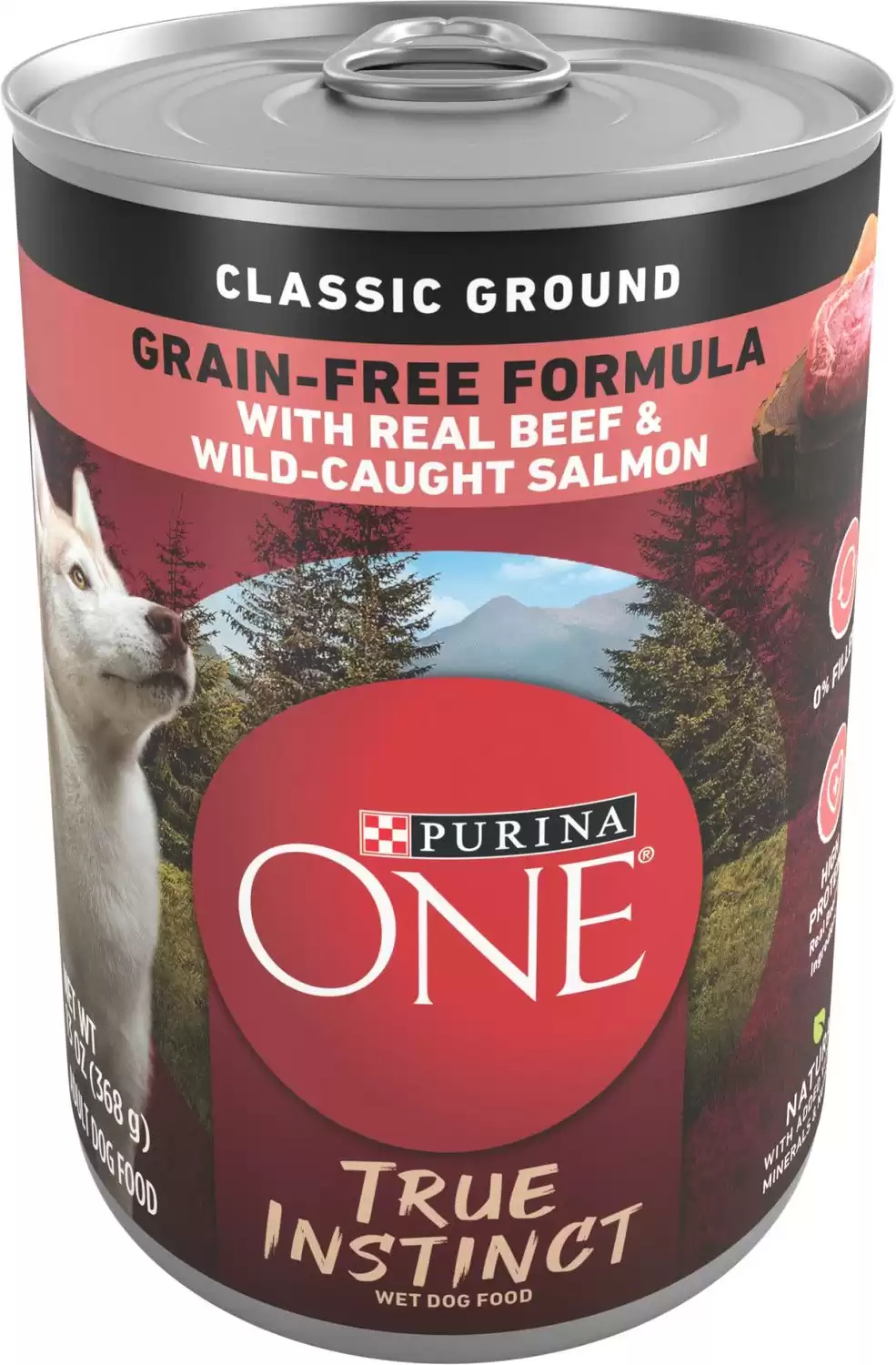Hokkaido
Canis lupus
Known for its bravery and ability to withstand the cold.
Advertisement
Hokkaido Scientific Classification
Hokkaido Facts
Hokkaido as a Pet:
- General Health
- Energy Level
- Shedability
- Trainability
- Intelligence
- Tendency to Chew
- Size
- Family and kid friendliness
- Yappiness / Barking
- Moderate
- Separation Anxiety
- Moderate
- Preferred Temperature
- Cold climate
- Exercise Needs
- Moderate
- Friendly With Other Dogs
- High
- Dog group
- Working
- Male weight
- 44-66 lbs
- Female weight
- 44-66 lbs
This post may contain affiliate links to our partners like Chewy, Amazon, and others. Purchasing through these helps us further the A-Z Animals mission to educate about the world's species.
View all of the Hokkaido images!
Bred from Japan, the Hokkaido also goes by the names “Ainu-ken,” “Seta,” and “Ainu dog.” It’s rare to find them anywhere but in Japan without a high price tag.
Showing off with a beautiful coat of many colors, the Hokkaido’s intelligence and adoration for their family makes it an excellent companion. They tend to maintain a sense of hyperawareness, allowing them to spot any trouble nearby. The thick coat needs regular brushing, but you might have a hard time with their bath – they are not typically fond of the process. However, the warmth of the coat makes them perfect for cold weather.
For a dog with a love of family and playtime, the Hokkaido fits the bill nicely.
See all of our expert product reviews.
Hokkaido vs. Shiba Inu
While it is hard to distinguish the Hokkaido and the Shiba Inu, one of the telltale differences is their size since the latter tends to be a little smaller. Their colors are relatively the same, as is their tendency to shed. Still, even when full-grown, the Hokkaido dogs end up weighing at least twice as much.
For the most part, these dogs are so close in their personality, ease of training, and nutrition that either would be a great choice for a family. Just make sure they get their exercise, or they can sing a pretty loud song.
3 Pros and Cons of Owning a Hokkaido
Before investing in the Hokkaido dog, consider these pros and cons.
| Pros! | Cons! |
|---|---|
| Protective: There are few dogs as productive as Hokkaidos. These pups form an incredible bond and will alert their family of possible danger. | Lots of grooming: As soft and lovable as Hokkaido dogs are, one of the most time-consuming concerns is grooming. Though baths are infrequent, they need brushing 1-2 times a week to keep matting under control. |
| Lovable: One of the most notable features of Hokkaido dogs is their loyalty to their family. | Inherited disease: While the Hokkaido is a relatively healthy breed, its relationship to other spitzes gives the dog a predisposition to certain genetic disorders. |
| Intelligent: Easy to train, this dog is brilliant already, allowing him to pick up cues quickly from their owner. | Howling: Though the dog generally makes little noise, they love to howl when they are happy and excited. |

©Happy monkey/Shutterstock.com
Hokkaido Size and Weight
Every Hokkaido dog – whether male or female – has a medium-sized build with many colors across its thick coat. Most of these puppies reach a height of 18-22 inches when they are full-grown, complementing their weight (44-66 lbs.) for a girthy dog. The females tend to be a little smaller, so they may be closer to the lighter end of this weight range.
| Height (Male): | 18-22 inches tall |
| Height (Female): | 18-22 inches tall |
| Weight (male): | 44-66 lbs., fully grown. |
| Weight (female): | 44-66 lbs., fully grown. |
Hokkaido Common Health Issues
Part of the reason that the adoption of Hokkaido dogs is so popular is due to their overall healthy genetics. However, they still need regular visits to a local veterinarian to stay that way, and they are at risk of certain hereditary diseases.
For instance, about one-third of Hokkaido dogs have the Collie Eye Anomaly, which leads to vision loss. They can also lose their ability to walk correctly if hip dysplasia or a luxating patella are left to progress. However, their limping is a good indication that one of these issues has occurred. Since these dogs naturally love to eat, pica (a condition that causes the dog to eat non-food items) is a concern to watch for as well. It may be accompanied by psychogenic polydipsia, causing them to deal with incredible thirst.
Anxiety and idiopathic seizures can occur in these dogs as well. Even by paying a high price with a breeder, the most common issues that these dogs face include:
Health and Entertainment for your Hokkaido
See all of our expert product reviews.
- Collie eye anomaly
- Pica
- Hip dysplasia
- Luxating patella
- Anxiety
- Idiopathic seizures
- Psychogenic polydipsia
Hokkaido Temperament and Behavior
The vocal personality of the Hokkaido gives them quite a range of noises. Though they will occasionally bark at passersby and other animals, their true range comes out when they become excited or happy. Be prepared for this ever-expressive breed to let out a big howl in those moments! Completely and utterly devoted to their family, the Hokkaido dog wants what it wants. If the dog no longer wants to play, they stop.
Their instinctual behavior to hunt and look for prey interferes with their ability to be around other animals and strangers, but good training can help. They have a pack-oriented behavior, making them protective of every family member they bond with.
Despite their medium height and weight, the Hokkaido seems to be suited to any living quarters. Whether you live in an apartment or townhome, they just need a little time outside to get their playtime, preventing their temperament from going.
How to Take Care of Hokkaido
The Hokkaido dog is relatively rare in the world, which is why any potential owner should consider their care before adoption. When adopted as a puppy, they still have a lot to learn about the world around them, but the proper diet, training, and maintenance many a big deal. Consider these tips for their care to help your pet live its best life.
The Best Dog Food for Hokkaido Dogs
Mealtime is an integral part of the day for Hokkaido dogs and puppies alike. To help them maintain their energetic and long lifespan, one of the critical issues to watch for is overeating. Their needs change as they age, but
Instructions: Cover both specific dog food considerations for this breed as an adult and a puppy.
Reference the different nutrient needs for puppies and adult dogs, as well as the health concerns above. For example, look for foods that help sustain their joints, since they’re vulnerable to bad hips and knees. Always stay in touch with the vet about the state of your dog’s health and any dietary recommendations.
Accordingly, A-Z Animals chooses Purina ONE Grain Free, Natural Pate Wet Dog Food as the best dog food for Hokkaido dogs.
This food is made with real turkey and venison, which are sufficient sources of glucosamine, which protects the joints from problems like hip dysplasia and patellar luxation. Also, since this is a wet, meaty food it may help alleviate discomfort for Hokkaido dogs experiencing extreme thirst from psychogenic polydipsia.
Follow the link below to get Purina ONE Grain Free Natural Pate Wet Dog Food on Chewy and Amazon.
- Purina One Smart Blend True Instinct Natural Grain-Free Adult Wet Food
- Beef & Wild Caught Salmon with Real Beef as #1 Ingredient
- No Poultry By-Products
- Antioxidants Support Healthy Immune System
- Omega Fatty Acids for Healthy Skin And Coat
Hokkaido Maintenance and Grooming
The beautiful colors of the Hokkaido’s coat – like black, white, brindle, red, brindle, tan, and sesame – provide quite a beautiful sight, and they’ll need regular grooming to stay healthy. The coat is incredibly thick, requiring no less than twice-weekly brushing to stop matting from building up. They go through two shedding periods each year that will warrant a little extra care.
When it comes to baths, don’t be surprised if your Hokkaido dog refuses. Since the hair is so dense, the drying process takes quite a long time. Luckily, they don’t need more than a few baths a year (unless they become filthy).
Hokkaido Training
The Hokkaido dog is easy to train, which is partially due to their intelligence. Their pack mentality could make them a little stubborn, but it also allows them to understand the hierarchy in the home. If you want this dog to list, you must establish yourself as the alpha early on.
Even with special training, they always must be approached with kindness rather than aggression (unless a stranger wants the behavior turned right back to them.
Hokkaido Exercise
With the ability to adapt to any size of surroundings, the Hokkaido is a rather active dog that needs time and space to exercise. With a 12-15 years lifespan, bringing them somewhere that they run, play, and exercise is necessary. They’ll be happy in any home – even an apartment – if you take the time to go outside with them for some open and free exercise.
Active owners are the best matches for Hokkaido’s – these dogs love to tag along on a hiking session or a camping trip. They have incredible skills in endurance activities like pulling weight or dock diving. Even the puppies that never learn to like a bath then to do wonderfully while swimming.
Hokkaido Puppies
The only circumstances you should consider with Hokkaido puppies (rather than adults) is early exposure to much of their care and socialization. They need to spend time with children to learn how to behave correctly, and they need to have some grooming performed early in life – like baths, nail clipping, and ear checks.

©Happy monkey/Shutterstock.com
Hokkaido And Children
Hokkaido’s are excellent companions for nearly every family size! It doesn’t matter if you live alone or have a large family with many children – Hokkaidos soak it all in. If they are raised with young children, they find getting along relatively easy and loyal to their loved ones.
As with any breed, take the time to teach younger children to play with this dog appropriately. The weight of the Hokkaido gives it some substantial girth, and children that play too roughly may put their pets and themselves in danger.
Dogs similar to Hokkaido Dogs
If the Hokkaido is not your preferred breed, other breeds of interest include Japanese Spitz, Shiba Inu, and Akitas.
Japanese Spitz. The Japanese Spitz comes from the same dog family as Hokkaidos, but they have a much smaller build for individuals who may want a dog without incredible girth.
Shiba Inu. Often compared to Hokkaido dogs, the Shiba Inu is slightly smaller. Also found in Japan, this dog is agile and alert, making them an excellent companion for hunters.
Akita. The Akita is large, but they are much easier to find than Hokkaido dogs if you live outside of Japan.
Popular Names for Hokkaidos
Some popular names for Hokkaido dogs include:
- Rogue
- Echo
- Dream
- Sadie
- Pepper
- Coco
- Poppy
- Luna
Hokkaido FAQs (Frequently Asked Questions)
How much is a Hokkaido dog?
Purchasing a Hokkaido dog as a puppy from a reputable breeder comes at a price of $1,500 to $3,000. If you’re lucky enough to find one at an adoption center, the price will be much lower.>
Do Hokkaido dogs smell?
Although they do not like baths since their fur is so thick, they are known to have no odor.
Are Hokkaido dogs hypoallergenic?
Unfortunately, Hokkaido dogs are not hypoallergenic and shed a lot.
Why does the Hokkaido dog have lots of fur?
The Hokkaido has a thick, soft undercoat with a coarse outer coat for surviving high freezing temperatures.
How do you groom a Hokkaido dog?
The Hokkaido is a relatively easy dog breed to groom since its coat does not need trimming, and because of the natural oils in its skin, its coat has a very healthy look without products. Only regular brushing of their coat, ear cleaning, dental care, and nail trimming is necessary.
Is a Hokkaido good with kids?
When bonded with their family, Hokkaido dogs are loyal and protective, preferring constant companionship. They are wary of strangers. As with any dog, it is important to supervise young children at all times when around dogs.
How long does a Hokkaido dog live?
With proper care and handling, the Hokkaido dog breed has an average lifespan of 12 to 15 years.
Thank you for reading! Have some feedback for us? Contact the AZ Animals editorial team.
Sources
- DogTime, Available here: https://dogtime.com/dog-breeds/hokkaido#/slide/1
- Wisdom Panel, Available here: https://www.wisdompanel.com/en-us/dog-breeds/hokkaido-inu
- American Kennel Club, Available here: https://www.akc.org/dog-breeds/hokkaido/
- Wikipedia, Available here: https://en.wikipedia.org/wiki/Hokkaido_(dog)
- Dog Breeds List, Available here: https://www.dogbreedslist.info/all-dog-breeds/hokkaido-dog.html
- Hokkaido Association of North America, Available here: https://www.hokkaidoken.org/
- Dog Zone, Available here: https://www.dogzone.com/breeds/hokkaido-dog/
- BMJ Journals, Available here: https://jnnp.bmj.com/content/74/2/192
- BMJ Best Practice, Available here: https://bestpractice.bmj.com/topics/en-us/865
- Kids Health, Available here: https://kidshealth.org/en/parents/pica.html
- VCA Hospitals, Available here: https://vcahospitals.com/know-your-pet/collie-eye-anomaly


















